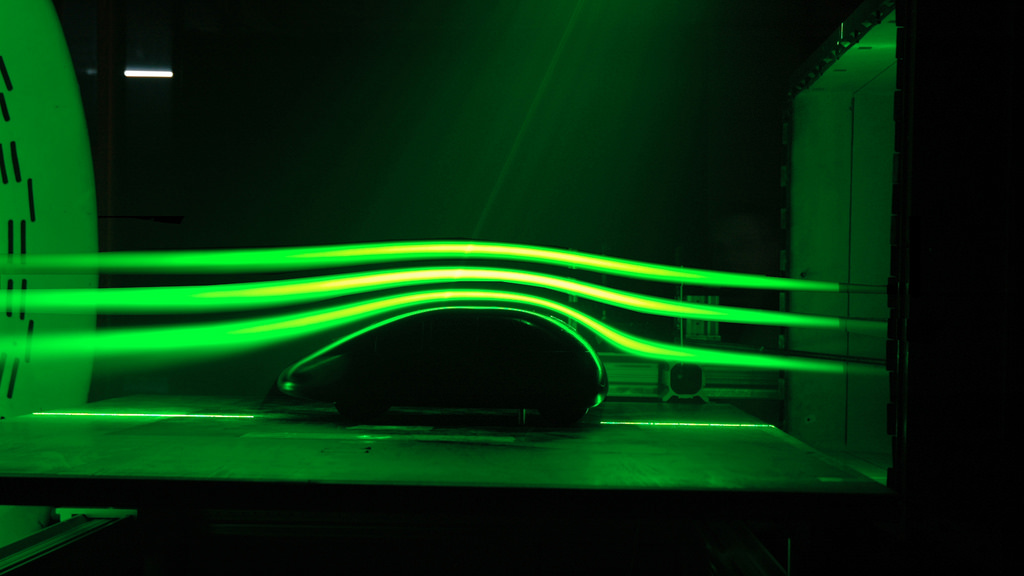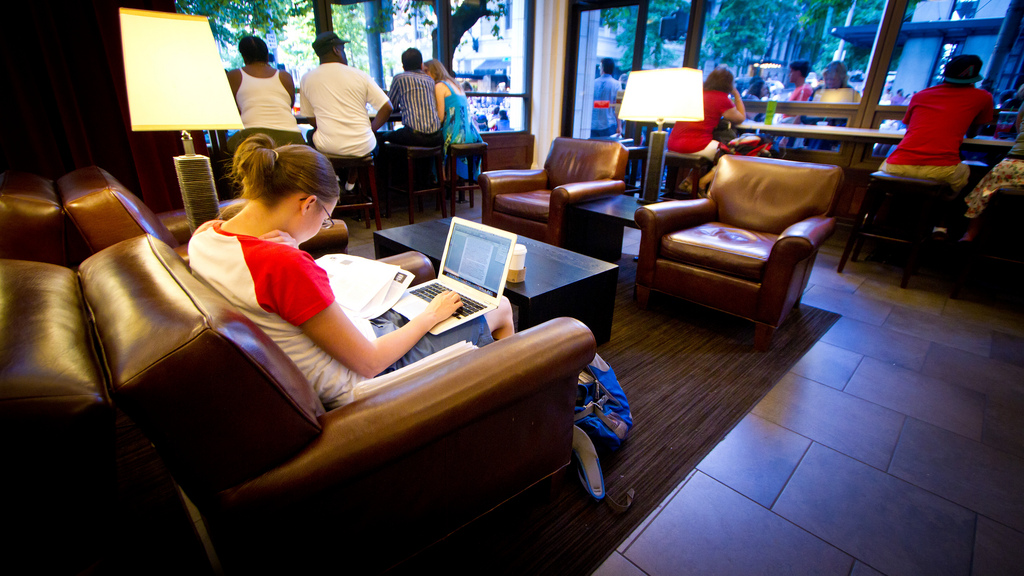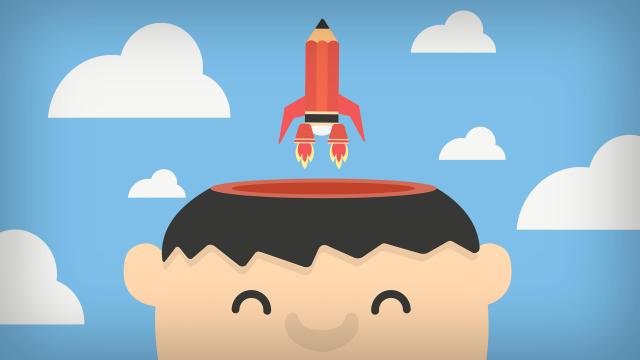Trying to do your best work with a distracted brain is like trying to swim for a gold medal without a swim cap. Divided attention is like a thick head of hair creating a constant drag in your mental waters. You should approach your workflow the same way — by removing the things that are dragging you down.
This post originally appeared on James Clear’s blog
Let’s look at one example of an Olympic swimmer who has faced more than her share of challenges. Dana Vollmer did not have an easy road to the Olympics — Vollmer is an Olympic swimmer, but it wasn’t just the gruelling practice schedule that made her journey to the top difficult. At the age of 15, Vollmer discovered that she had a heart disorder known as long QT syndrome. She had heart surgery later that year, but the operation didn’t eliminate the risk of heart failure. (Even today, her mother watches swim meets from the stands with a defibrillator between her feet.)
When Vollmer finally qualified for the Women’s 100m butterfly at the 2012 Olympics in London, it was her heart that got all of the attention. Little did she know that her head was about to be the problem.
As soon as Vollmer entered the pool in the 100m Final, her swim cap came off.
Professional swimmers wear latex swim caps that tightly cover their head to reduce drag in the water. Nearly every swimmer wears them, but swim caps are especially important for female swimmers. If a female swimmer loses her swim cap and her hair flows out into the water, then it can significantly increase the drag that she must swim against during the race. In a highly competitive race like an olympic final, this additional drag force can be the difference between winning and losing.
This is why nearly all professional swimmers wear not just one, but two swim caps. That’s exactly what Vollmer did. Although her top swim cap flipped off, her second cap stayed in place allowing her to not only avoid disaster, but also win the gold medal and set a new world record in the process. (Another reason swimmers wear two caps is to prevent their goggles from being knocked off when they jump into the water.)
Now, let’s get to the real fun. What does wearing swim caps have to do with living a better life?
Physical Drag Versus Mental Drag

Imagine that your brain is a computer. At the beginning of the day, your brain powers up and you have 100 per cent of your computer memory available to use on your life. The only problem is that every time you add a task to your to-do list, a little bit of your computer memory goes toward that task.
If you open your email in the morning and see three messages that you need to respond to later on, there goes three per cent of your computer memory. If you have to remember to take your child to practice after school or pick up the dry cleaning or go to the grocery store, there goes a little bit more memory. The more tasks that are left unfinished, the more memory gets used up remembering, thinking, worrying, and planning for those tasks.
Here’s the punchline: If your brain is constantly filled with all of these secondary tasks, how much memory do you have left over to do meaningful work? 70 per cent? 50 per cent? Even less?
Trying to do your best work with a distracted brain is like trying to swim for a gold medal without a swim cap. Divided attention is like a thick head of hair creating a constant drag in your mental waters. Split your attention in too many directions and you’ll be paralysed.
Swimmers realise that if they want to perform at their best, they need to get out of their own way. They need to cover the object that creates drag — their hair — for the race. Does this mean that their hair is bad? No, of course not. Similarly, there is nothing “bad” about your daily to-do list, handling your family responsibilities, or taking care of the emergencies that pop up throughout life. It’s just that when you want to perform at your best, you have to make a deliberate choice to tuck those things away for a few moments.
How can we expect to do our best work if we are constantly fighting mental drag?
How To Reduce The Drag Forces That Hold You Back

I don’t consider myself to be an expert in peak performance. I’m working through these issues just like you are. We’re on this journey together. But I have taken a few steps to give myself a better chance of hitting the bullseye in my own work, and I’m happy to share those with you. Here’s what works for me:
Manage Your Energy, Not Your Time
I have noticed that my creative energy is highest in the morning. That’s when I’m fresh. That’s when I do my best writing. That’s when I make the best strategic decisions about my business. So, what do I do? I schedule creative tasks for the morning. All other business tasks are taken care of in the afternoon. This includes doing interviews, responding to emails, phone calls and Skype chats, data analysis and number crunching. Nearly every productivity strategy obsesses over managing your time better, but time is useless if you don’t have the energy you need to complete the task you are working on.
Never Check Email Before Noon
Personally, if I don’t check email at the beginning of the day, then I am able to spend the morning pursuing my own agenda rather than reacting to everybody else’s agenda. That’s a huge win because I’m not wasting mental energy thinking about all the messages in my inbox. I realise that waiting until the afternoon isn’t feasible for many people — work and email being intertwined for many — but I’d like to offer a challenge. Can you wait until 10am? What about 9am? 8:30am? Don’t get wrapped up in the exact time frame. The point of this strategy is to allow yourself some time during your morning where you can work on what is most important to you without letting the rest of the world dictate your mental state.
Leave Your Phone in Another Room
I usually don’t see my phone for the first few hours of the day. It is much easier to do focused work when you don’t have any text messages, phone calls, or alerts interrupting your focus.
Work in Full Screen Mode
Nearly every application on my computer is in full screen mode. If I’m reading an article on the web, my browser takes up the whole screen. If I’m writing in Evernote, I’m working in full screen mode. If I’m editing a picture in Photoshop, it is the only thing I can see. I have set up my desktop so that the menu bar disappears automatically. When I am working, I can’t see the time, the icons of other applications, or any other distractions on the screen. It’s funny how big of a difference this makes. If you can see an icon on your screen, then you will be reminded to click on it occasionally. However, if you remove the visual cue then the urge to be distracted subsides in a few minutes.
Remove Tasks That Could Distract From Your Morning Focus
I love doing the most important thing first each day because the urgencies of the day have not crept in yet. I have gone a little far in this regard in that I have even pushed my first meal off until about noon each day. I have been intermittent fasting for three years now, which means that I typically eat most of my meals between 12pm and 8pm. The result is that I get some additional time in the morning to do focused work rather than cook breakfast.
Do Creative Work First
The best way to avoid mental drag is to give yourself the time and space to do important work before distractions can creep into your day.
The single most important change you can make in your working habits is to switch to creative work first, reactive work second. This means blocking off a large chunk of time every day for creative work on your own priorities, with the phone and email off.
— Mark McGuinness, Manage Your Day-to-Day
Creating meaningful work is hard, even in optimal circumstances. Put on a swim cap and tuck your distractions away for a few moments. Give yourself the opportunity to perform at your best.
Never Check Email Before Noon (And Other Thoughts on Doing Your Best Work) [James Clear]
Image by Mr-Vector7 (Shutterstock). Additional photos by DLR German Aerospace Center and Nicola (Flickr).

Comments